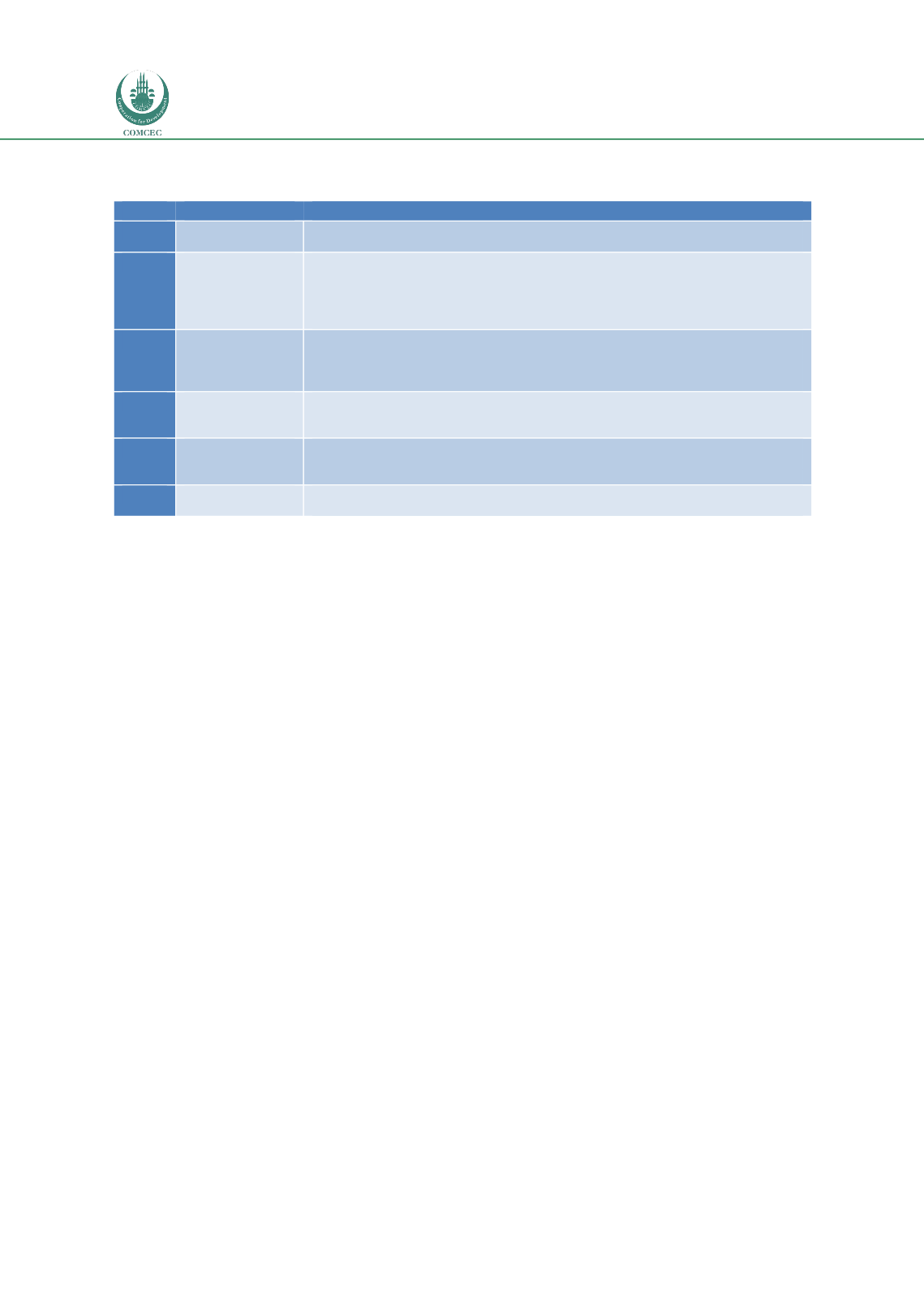

Reducing Postharvest Losses
In the OIC Member Countries
106
Table 48: Summary of percentage volume and value of tomato losses, 2008 – 2014,
Bangladesh
Dates
Organisations
Findings on quantities lost
2010
BAU paper
Akhter, R.
Postharvest (PH) loss for farmers (n=75) was between 4.5% and 22%; average was
11.27
%.
2010
BAU MSc thesis
Uddin, M. J.
Average PH loss was
36.4
%.
13% was lost due to grading and transportation to local market;
4.5% lost in storage by assembly traders;
10.8% lost due to long transport, packaging, handling and storage at wholesaler; 8.1%
was lost at city/district market retailers and 1.35% to tomato ketchup industry.
2010
BAU, FAO
Hassan et al.
Estimates of PH losses were: Farmers (n=75) 6.9%; Assembly traders (n=75) 9.1%;
wholesalers (n=100) 8% and Retailers (n=100) 8.9%. Total =
32.9
%
Total value lost in 2008 was
Tk605 million
at farm price and
Tk 780 million
at retail
price.
2014
BARI
Khatun et al.
Average PH losses estimated at 15.37% for farmers (n=90) and 10% for traders (n=90).
Monetary loss for farmers’ level was estimated at
Tk78,540 per hectare
. At national
level monetary loss was estimated at
Tk523 million
during 2009-10
2014
USAID
Postharvest losses at farm level estimated at
30-40
% with a further
10
% loss from
farm-gate to local market. An additional
20
% loss occurs when produce travels from
regional/local market to national market.
2016
FAO/BARI
2.6% of tomatoes unmarketable after 5 days (brought from Bogra to Gazipur wholesale
market)
The issue of crop loss is significant not only at national level but for individual farmers who
have invested large amounts in the hope of making good returns. Investing in production and
marketing of perishable produce is a high risk activity. The impact of this loss is summarised
by USAID (2014:123) as “reducing returns to actors at all levels of the value chain as well as
detracting from overall value and pushing all actors in the value chain to adjust prices
downward in anticipation of losses”. It also means that consumer prices are higher than they
could be.
However, the studies did not consider what happened to the ‘lost’ produce and the wastage
may actually have an economic use. Farmers are often unaware of their costs of production
and may refuse to sell their produce if the price falls below a certain level rather than
maximise their profits by selling as much as they can, even at a lower price.
Quality lost and value of that quality
The study by Hassan et al. (2010) highlights postharvest quality and produce safety as
important concerns for consumers. They found that little previous work on this subject and
highlighted the need for assessment of nutritional quality loss due to its important for
nutritional food security. Their work indicated that vitamin C, being unstable, degrades due to
oxidation and that the time between harvest and consumption should be minimised. No
monetary value was given for the value of lost quality but the authors highlight its importance
for national nutritional security policy. This is particularly significant in a country where
considerable numbers of people depend on the starchy staple rice and where there is poor
consumption of nutrient-rich foods such as fruits and vegetables fruit and vegetables
(considerably below WHO/FAO recommended levels) (Arsenault et al., 2103).
An environmental cost of postharvest losses was mentioned by Practical Action, of incidences
of where gluts and significant price drops have led to rotting tomatoes being dumped into
rivers.
















